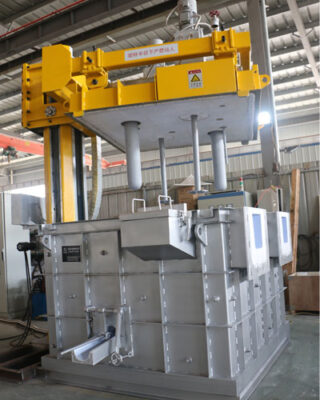“Degassing” generally refers to the removal of gases from alloys, and “refining” refers to the removal of inclusions in alloys. The purpose of aluminum melt degassing and refining is to remove or reduce oxide inclusions and gases as far as possible, so as to improve the degree of metal purification. Therefore, aluminum melt degassing and refining are generally referred to as purification treatment.
The requirements for the purity of aluminum alloy melt are generally due to different varieties and uses. Generally, the hydrogen content should be less than 0.2ml/100gal, but it should be less than 0.1ml/100gal for aviation materials with special requirements. It is difficult to have quantitative requirements for non-metallic inclusions because they can not be accurately quantified. There are many purification methods for aluminum and aluminum alloy, which can be classified into two categories: in furnace purification and external purification. At present, inert gas and flux refining and ceramic foam filter purification are widely used in China. Some large and medium-sized aluminum processing plants have also introduced on-line processing devices, so as to further improve the melt quality.
Source of Gas in Aluminum Alloy
In the process of smelting aluminum alloy, there are many kinds of gases, such as H2, CO2, Co, N2, hydrocarbon, H2O, and O2, which are brought in from the atmosphere, fuel, burden, refractory, flux and casting tools. But only those gases which are easy to decompose into atoms can be dissolved into liquid aluminum in large quantities. Specifically, 80-90% of the gas dissolved in liquid aluminum is hydrogen. Therefore, the gas content in aluminum alloy mainly refers to the hydrogen content. There is not much hydrogen in the surrounding air during smelting, so the main source of hydrogen is hydrogen atom produced by the reaction of water and molten aluminum. 2Al+3H2O=Al2O3+6[H]. Some of this atomic hydrogen goes into the atmosphere and some into the liquid aluminum. It has been proved that the gas content in ingot varies with the air humidity in different seasons and regions, and the air content increases with the increase of air humidity.

Affecting Factors of Gas Content
The influence of alloy elements: The alloy elements with greater binding force with gas, such as titanium, zirconium, magnesium, etc., can increase the gas solubility in the alloy, while the alloy elements such as copper, silicon, manganese and zinc can reduce the gas solubility in aluminum alloy.
Influence of gas partial pressure: under the same temperature, the solubility of gas in metal increases with the increase of hydrogen partial pressure in furnace gas composition. Therefore, the solubility of hydrogen in aluminum melt melted by flame furnace is higher than that in electric furnace.
The effect of temperature: when the hydrogen partial pressure is constant, the higher the temperature is, the more hydrogen is absorbed by aluminum melt.
In addition, the state of oxide film on metal surface and melting time also affect the solubility of gas in aluminum melt.

